Are you planning your next adventure in Cusco, Peru? Choosing the right time to visit this captivating destination can make the difference between an unforgettable experience and a less satisfying one. From the charming sunny days of the dry season to the mysterious atmosphere of the rainy season, each season offers a unique experience in this imperial city. From April to November, you can enjoy clear and temperate days during the dry season, perfect for exploring archaeological sites, hiking in the Andes, and marveling at Machu Picchu without overwhelming crowds. On the other hand, the rainy season, spanning from December to March, offers a different atmosphere with warmer temperatures and lush vegetation that shines under the rain, creating an idyllic setting for nature lovers and adventure seekers.
In addition to the weather, the influx of tourists and special events also influence your travel experience. From the crowds of visitors during the high season, from June to August, to the tranquility and lower prices of the low season, from December to March, each period has its advantages and challenges.
Whether looking for nature adventures, exploring history and culture, or simply relaxing and enjoying the atmosphere, choosing the right time to visit Cusco is the first step to an unforgettable experience in this fascinating Peruvian city. Let’s get started!

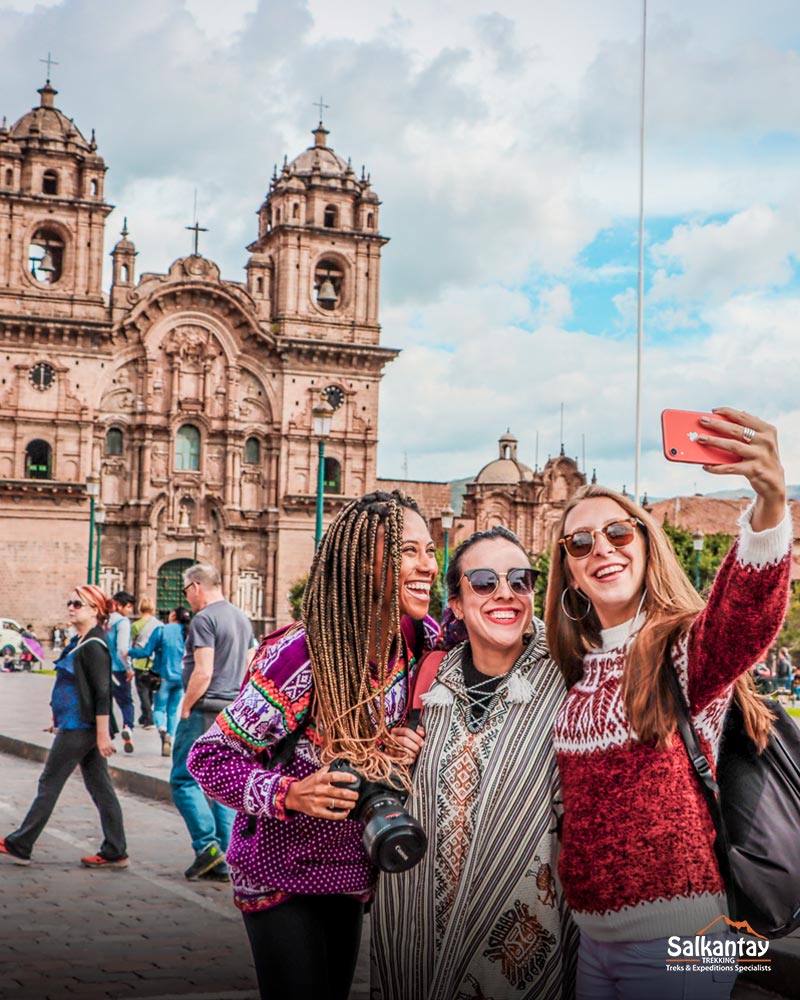

Exploring Climates in Cusco
Cusco, a city rich in history and culture in the heart of the Peruvian Andes, offers a variety of climates that influence visitors’ experiences throughout the year. From the sunny and clear days of the dry season to the frequent rainfall and warm temperatures of the rainy season, each season has its charm and distinctive activities.
During the dry season, travelers can delight in clear skies that offer panoramic views of the city and the surrounding mountains, with ideal temperatures for outdoor exploration.
On the other hand, the rainy season brings a mysterious atmosphere and lush vegetation, ideal for nature lovers who want to experience the beauty of flora and fauna at its finest.
Dry Season (April to October):
- Weather: Enjoy sunny and dry days with clear skies that allow you to appreciate panoramic city views and mountains.
- Temperatures: Temperatures range between 15 and 20 degrees Fahrenheit, ideal for outdoor activities without feeling too hot or cold.
- Visibility: The clear sky lets you enjoy impressive views of Cusco and its surroundings, including the snow-capped peaks.
- Activities: Take advantage of the favorable weather for hiking, cycling, visiting Machu Picchu and other archaeological sites, or simply strolling through the city and admiring its architecture.
Rainy Season (November to March):
- Weather: While frequent rainfall occurs, especially in the afternoons, temperatures are warmer, averaging 22 degrees Fahrenheit.
- Visibility: Fog and clouds may sometimes affect visibility, but they also create a unique and mysterious atmosphere.
- Activities: If you love nature, this season is ideal for observing flora and fauna at its finest. You can also take advantage of lower prices and fewer tourists to explore lesser-known places.


Tourist Influx
The dynamics of tourist influx are crucial to ensuring a satisfactory experience. During the high season, the city is flooded with a wave of visitors worldwide. This period, although exciting, comes with challenges, such as long lines and higher prices for accommodation, transportation, and activities. However, if you prefer to escape the crowds and enjoy a quieter experience, the low season, from December to March, is ideal. During these months, you’ll enjoy a serene atmosphere, less congestion at tourist sites, and find deals and discounts on various services. So, whether you prefer to immerse yourself in the energy of the high season or explore Cusco at your own pace during the low season, this guide will help you make the most of your visit to this Peruvian imperial city.
High Season (April to October):
- Higher number of tourists: Cusco is filled with visitors from around the world, meaning tourist sites will be more crowded.
- Higher prices: Accommodation, transportation, and activity prices increase considerably due to high demand.
- Congestion at tourist sites: Be prepared for long lines and waits at significant attractions like Machu Picchu.
Low Season (November to March):
- Fewer tourists: Enjoy a quieter and less congested atmosphere at tourist sites.
- Lower prices: Find deals and discounts on accommodation, transportation, and activities.
- Quieter atmosphere: Explore Cusco at your own pace and enjoy a more personalized experience.
What to do in each Season?
In the Dry Season (April to October):
During the dry Season, Cusco offers a variety of outdoor activities under the warm sun. Exploring the Inca ruins of Machu Picchu is an unparalleled experience during this time, as clear skies offer stunning views of this archaeological wonder.
Those who enjoy hiking can venture on the Inca Trail, an ancient Inca path leading to Machu Picchu, or explore the spectacular landscapes of the Sacred Valley. Additionally, this Season is perfect for enjoying cultural festivals and outdoor events, such as the Festival of the Sun in June, which celebrates Inca heritage with colorful parades and traditional dances.
Rainy Season (November to March):
Despite occasional rains, the rainy Season in Cusco has its charm and offers unique opportunities to explore the region. Lush vegetation and vibrant landscapes are especially magnificent during this period, making excursions to nearby forests and mountains particularly rewarding.
Adventurous travelers can visit the region’s natural wonders, such as Rainbow Mountain or Humantay Lake, where they can marvel at the beauty of the landscape in its full splendor. Additionally, this Season is ideal for immersing oneself in the local culture by participating in traditional festivals, such as the Cusco Carnival in February, where music, dance, and parades fill the streets with joy and color.
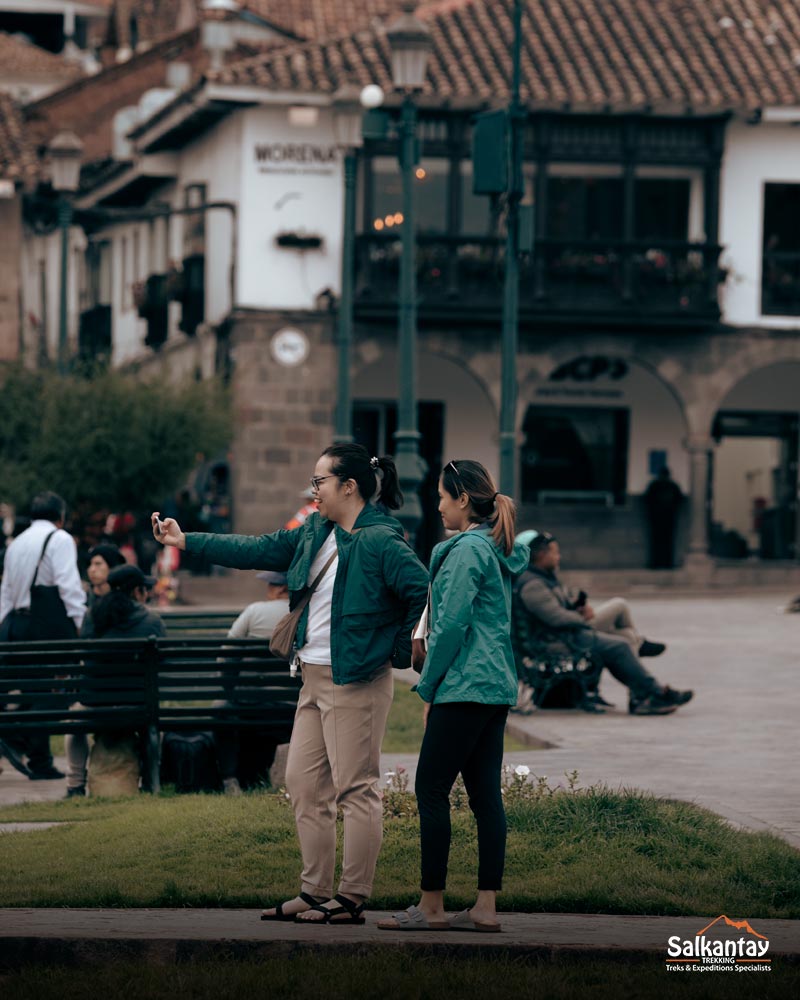
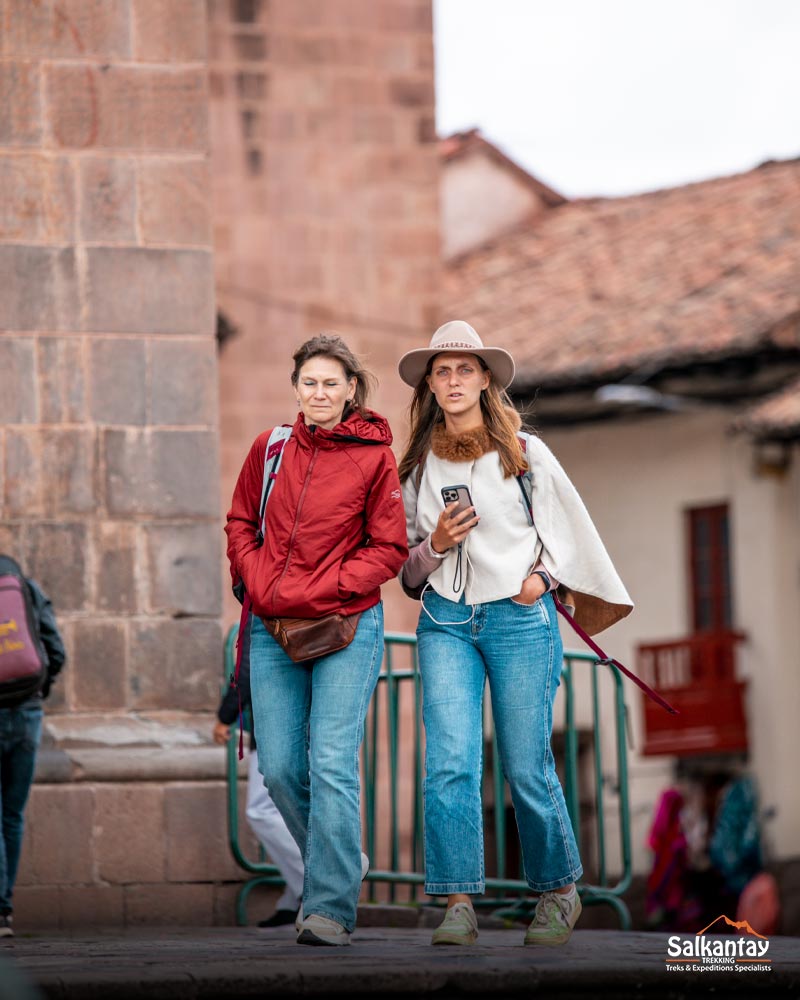


Packing Tips
What to bring in the dry Season?
Light and comfortable clothing for the day:
- Opt for relaxed and comfortable garments like short-sleeved shirts, lightweight pants, and skirts.
- Choose breathable fabrics that help you stay cool during the day.
Sunscreen and hat for sun protection:
- Use a broad-spectrum sunscreen with a sun protection factor (SPF) of at least 30.
- Wear a wide-brimmed hat or cap to protect your face and neck from the sun.
Warm clothing for nights:
- Although days may be warm, nights in Cusco can be cool, especially at higher altitudes.
- Pack a light jacket or sweater to wear at night when temperatures drop.
Sturdy footwear for walking and exploring archaeological sites:
- Opt for comfortable and sturdy walking shoes, such as sneakers or hiking shoes.
- Make sure your shoes have good traction when walking on uneven terrain.
What to bring in the rainy Season?
Rainproof or poncho for rain:
- Carry a lightweight rainproof poncho that you can easily store in your backpack.
- Make sure the rainproof has a hood to protect your head from the rain.
Quick-drying clothing and waterproof layers:
- Choose quick-drying garments that keep you comfortable even if you get wet.
- Wear waterproof layers like a jacket and pants to stay dry in rainy weather.
Sturdy trekking boots for wet terrain:
- Use sturdy trekking boots with non-slip soles for walking on wet and slippery terrain.
- Look for waterproof boots to keep your feet dry during your rainy season adventures.
Waterproof backpack to protect belongings:
- Store your essential belongings in a waterproof backpack to protect them from the rain.
- Consider bringing additional plastic bags to protect electronic items and sensitive documents.
Remember to adapt your luggage to the activities you plan to do and the expected weather conditions during your visit to Cusco. With these tips, you’ll be prepared to enjoy your trip no matter the Season you decide to travel in.
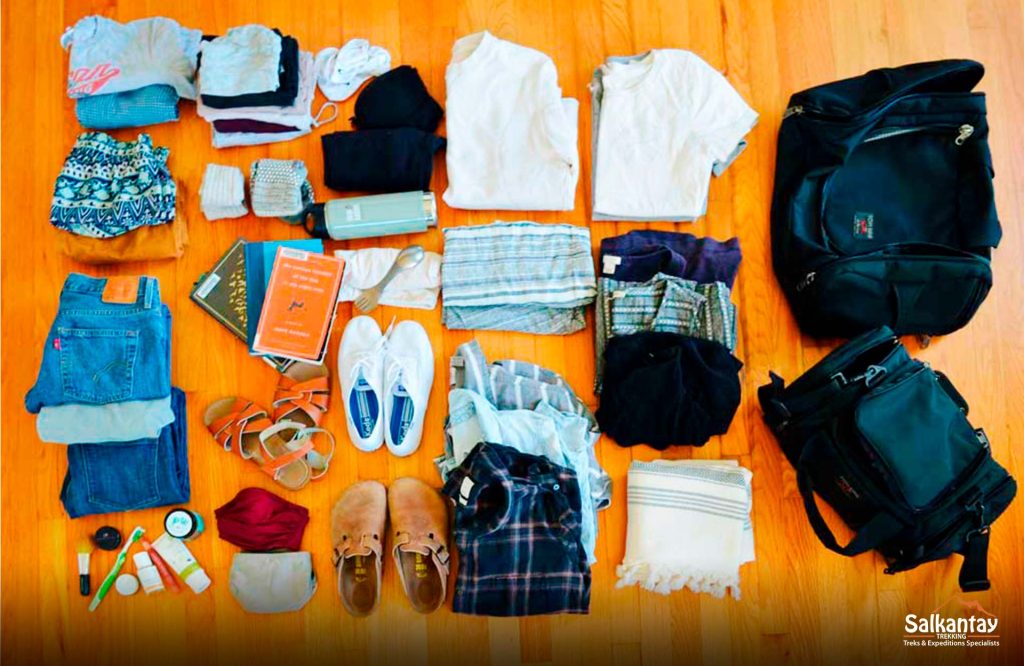
Celebrations and Festivities in Cusco
Cusco is known for its vibrant festivals and cultural events, which reflect the region’s rich historical and cultural heritage. In addition to main events like Inti Raymi and the Cusco Carnival, there are a variety of celebrations throughout the Year that are worth experiencing:
- Cusco Carnival: is a colorful festival full of music and joy. There are parades and troupes amid foam and water.
- Holy Week: Throughout the week, experience flower carpets, representations of the Passion of Christ, and various Cusco dishes and customs.
- Corpus Christi: The religious procession of saints from each district of Cusco, gathering in the main square with processions. You can delight in the famous dish: “Chirihuchu,” a famous cold dish on this date.
- Inti Raymi: is a sun festival, one of the most important in the Inca calendar. It is celebrated at the archaeological site of Sacsayhuaman.
- All Saints’ Day and Day of the Dead: are celebrations with visits to cemeteries, offerings to the deceased, and the consumption of sweet bread known as Tantawawas and horse bread.
- New Year: enjoy meeting new people and experiencing midnight in Cusco’s main square.
Learn more about the holidays in Cusco in 2024 on our blog, where we detail everything you can find throughout the Year in the imperial city.
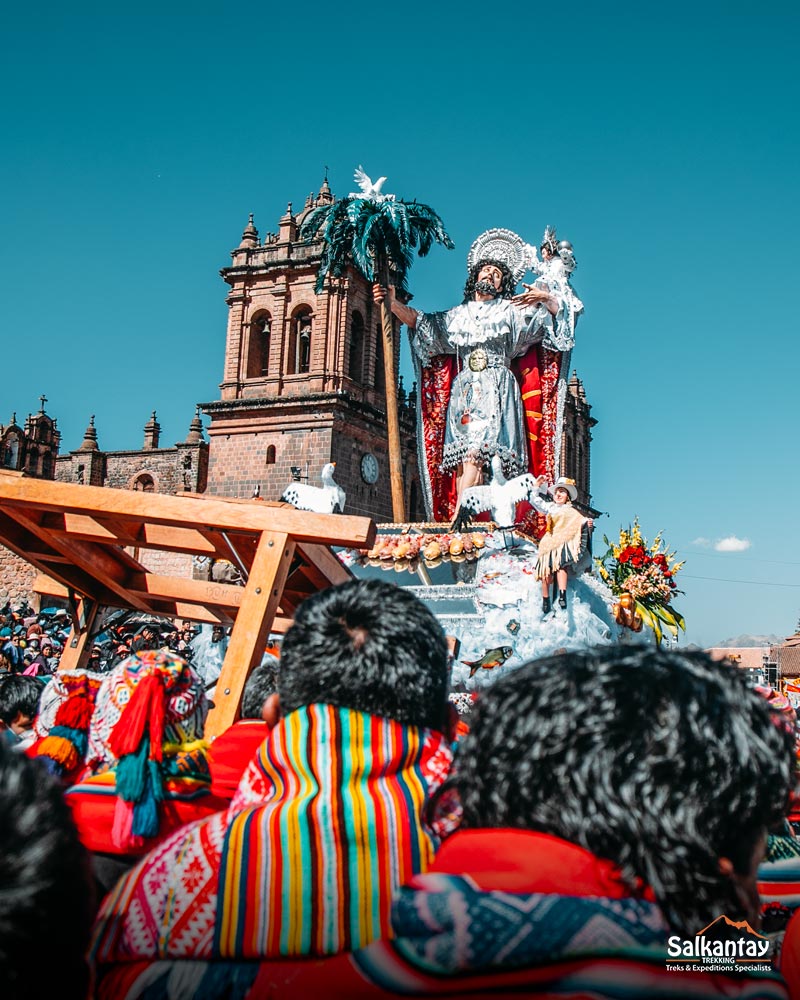

Tips for Choosing the Best Time
Budget:
High Season: if you have a flexible budget, the high Season in Cusco offers the advantage of good weather and the availability of all activities. However, it’s essential to be prepared for higher prices in accommodation, transportation, and other tourist activities due to demand.
Low Season: Low Season is your best choice if you’re looking for more economical options. During this time, you’ll find lower accommodation, transportation, and activity rates, allowing you to save money on your trip to Cusco.
Interests:
Weather: The dry Season (from May to October) is ideal if you prefer sunny and dry weather for outdoor activities. During these months, rains are less frequent, making it more favorable to explore archaeological sites and hike through the region’s impressive landscapes.
Activities: Before planning your trip, research what activities you would like to do in Cusco and its surroundings. Whether you want to explore the Inca ruins of Machu Picchu, hike the Inca Trail, or visit the Sacred Valley, choose the Season that best suits your interests and preferences.
Events: if you’re interested in participating in a special event, such as cultural festivals or traditional celebrations, plan your trip to secure a spot and fully enjoy the local experience.
Planning:
Reservations: Regardless of the Season you choose to travel, we recommend making your accommodation and transportation reservations in advance. This is especially important if you plan to travel during the high Season when the demand for tourist services is higher, and options may quickly run out.
Visas and Vaccines: Before traveling to Peru, research and comply with the necessary visa and vaccination requirements. Depending on your country of origin, you may need to obtain a tourist visa and specific vaccines, such as the yellow fever vaccine.
Travel Insurance: for peace of mind while traveling, it’s advisable to purchase travel insurance that provides coverage in case of any eventuality, such as illness, accidents, or loss of luggage. Be sure to review the coverage and conditions of your insurance before embarking on your adventure in Cusco.


Remember to consider:
When traveling to Cusco, it’s essential to consider safety and health to ensure a pleasant and hassle-free experience. Here are some tips for staying safe and healthy during your visit:
Altitude and Altitude Sickness:
- Cusco is located at a considerable altitude (approximately 3,400 meters above sea level) and can cause altitude sickness in some people.
To prevent altitude sickness, it’s recommended to take measures such as resting well before arrival, avoiding excessive alcohol and caffeine consumption, and drinking enough water to stay hydrated.
- If you experience symptoms of altitude sickness, such as headache, nausea, or difficulty breathing, rest and drink fluids. If symptoms persist or worsen, seek medical attention.
Hydration and Nutrition:
- Due to the dry climate and altitude, staying hydrated is essential during your stay in Cusco. Drink water regularly and avoid excessive alcohol and caffeine consumption, as they can contribute to dehydration.
- Consume light and nutritious foods that provide energy, such as fresh fruits, vegetables, and complex carbohydrates. Avoid heavy and fatty meals, which can hinder digestion and worsen symptoms of altitude sickness.
Sun Protection and Proper Clothing:
- Due to the high altitude, ultraviolet radiation is more intense in Cusco, so protecting yourself from the sun is essential.
- Use sunscreen with a high sun protection factor (SPF) and reapply it regularly, especially if you spend much time outdoors.
- Wear appropriate clothing to protect yourself from the sun and cold. Include wide-brimmed hats or hats, sunglasses, long-sleeved shirts, and lightweight pants.
Personal Safety:
- Keep your belongings safe at all times. Use secure bags or backpacks that you can carry in front of you and safely store your valuables in your accommodation.
- Be careful when walking in crowded areas and avoid publicly displaying large sums of money or valuables.
- Familiarize yourself with areas to avoid for safety reasons and follow the recommendations of locals and local authorities.
Scams and Deception:
- Stay alert to possible scams and deceits targeted at tourists. Avoid participating in activities that seem suspicious or unreliable, and be cautious when accepting offers from strangers.
- Always trust reputable services and companies and avoid giving personal or financial information to unknown individuals.
By following these health and safety tips, you can enjoy your visit to Cusco safely and without worries. Always be aware of your surroundings and take precautions to ensure a pleasant and memorable experience.

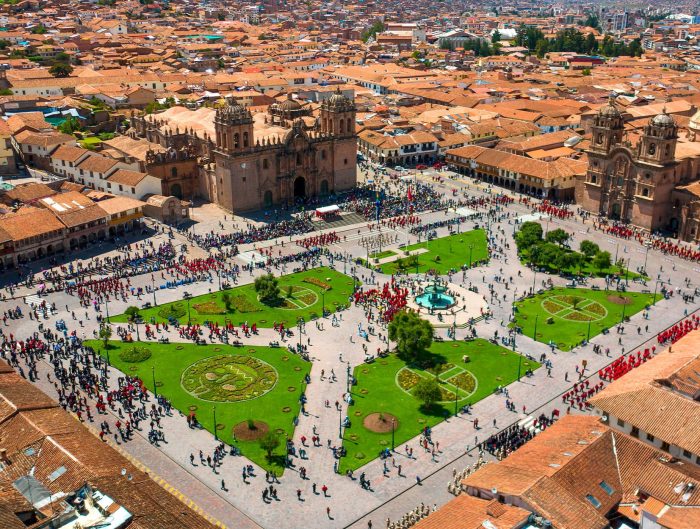
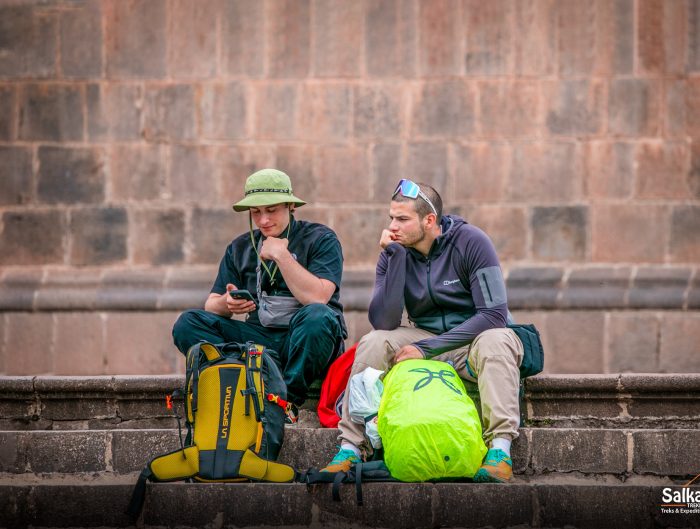










Leave A Reply